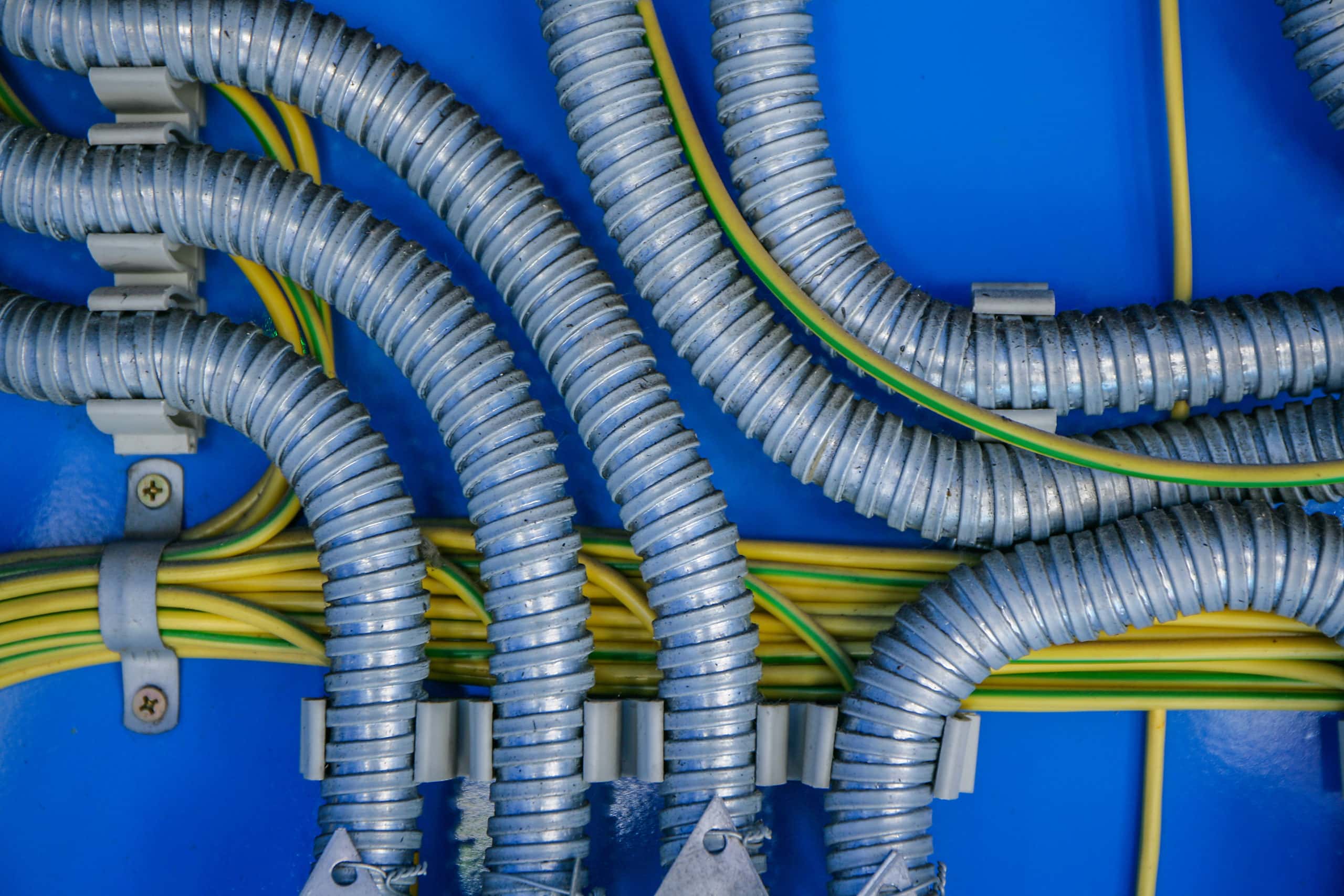Conduit in Plenum Elements: What You Need To Know
Plenums are environmental air handling spaces in buildings. No flammable material should be installed in those building spaces, due to lessons learned about preserving life and preventing injury from fire. A short document describing what conduit may be used in various areas is available as a reference from ANAMET Electrical, Inc.: Conduit Allowed in Plenum Environments.
Follow approved building plans and local safety code if you are purchasing conduit or installing conduit in a building. In short, conduit cannot be installed in all building spaces, even though it protects wiring.
What you need to know
Flexible metal conduit (sometimes called FMC, Greenfield or Flex) is made of metal strip coiled in a continuous hose. The metal is resistant to flame. Another benefit of this conduit is that it can protect wiring from physical damage. In a building, wiring must often be put around tight corners, near exposed metal with sharp edges or other hazards.
What Is A Plenum?
A plenum space is a compartment or chamber in a building that circulates conditioned air for heating or cooling purposes. In order to ensure proper ventilation, plenum spaces are usually located between the ceiling and the floor above or between the floor and the crawlspace below. Under the floor plenum spaces are also often used for routing wiring and ductwork.
In order to protect against fire, any material placed in a plenum space must be fire-resistant and have low levels of toxicity when burned. This type of material is referred to as “plenum rated.” Conduit, cable, and other electrical equipment that is installed in a plenum space must be plenum rated to meet building code requirements.
The word “plenum” is derived from the Latin word for “full.” Plenums were originally designed to be filled with air in order to provide more efficient ventilation. However, modern plenums may be insulated, only partially filled with air, in order to prevent noise from circulating or being amplified in the space. Although plenums can be found in all types of buildings, they are most commonly used in office buildings and schools.
Plenum Cable and Plenum Conduit
- Plenum cable is made with a special jacket that helps to protect the wire from fire. This is because plenum spaces often have a lot of oxygen, which can make them more susceptible to fire.
- Here are a few limitations put on flexible metal conduit for plenums. 1) Lengths are not to exceed 1.2 meters (4 feet). 2) No conduit with an overall nonmetallic covering shall be installed. 3) Only fire resistant metal is allowed, which protects wires from heat and fire.
- When choosing materials for a plenum space, it is important to choose products rated for use in these spaces. This ensures the safety of the building and the people who use it.
Cable vs. Conduit
- You may be allowed to install non-plenum cables in plenum areas depending on your building code requirements, if run through a plenum rated conduit.
- With plenum rated cable, there is no need for a conduit. Plenum rated cable is usually flame retardant, made with special plastics to prevent smoke or toxic fumes.
- Determine where wiring must be installed in a building, then specify the plenum rated cable or conduit.
Guidelines for Using Electrical Conduit in Plenum Environments
The National Electrical Code (NEC) serves as a guide that may be adopted or adapted by local jurisdictions for electrical safety and building codes. The NEC is frequently updated to address changes in technology and lessons learned in electrical and fire safety. Contact your local authority for current standards in electrical wiring installation. There are finer definitions for plenum environments in the NEC, promoting safety with new technology, such as information technology systems and their requirements. For ANAMET Electrical, Inc. support for safety see: Conduit Allowed in Plenum Environments.
Electrical Conduit, Fittings, and Accessories from Anamet Electrical
Anamet Electrical, Inc. is your one-stop shop for conduit systems. We offer a wide range of products that meet national and international fire safety requirements, among commercial, industrial and residential applications. Our team of experts can assist you in finding the right product to meet your needs.
Contact us today to learn more about our products and how we can help you with your next project.


